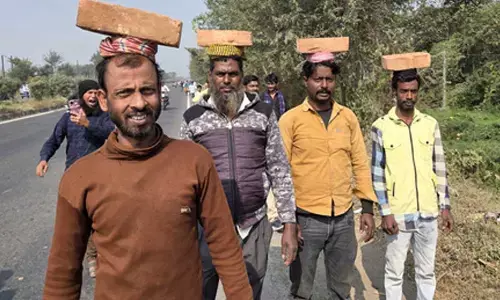Boat Club may be off-limits for protests

The Delhi Police is likely to recommend that Boat Club here should be used for symbolic protests and the agitations that require large gatherings should happen at the Jantar Mantar, after the Supreme Court lifted a blanket ban on rallies, dharnas or sitins at the Jantar Mantar and Boat Club areas
New Delhi: The Delhi Police is likely to recommend that Boat Club here should be used for "symbolic protests" and the agitations that require large gatherings should happen at the Jantar Mantar, after the Supreme Court lifted a blanket ban on rallies, dharnas or sit-ins at the Jantar Mantar and Boat Club areas.
According to a senior police officer, they are planning to recommend capping the number of participants at any Boat Club protest at 20.
"Since Boat Club is situated near Parliament, North and South Blocks, it is quite a sensitive area.
We are planning to recommend that the number of participants should be restricted to 20 and if there is a larger crowd, the protest should happen at Jantar Mantar," said a senior police officer.
The police are also planning to recommend the nature of protests that can happen at Boat Club.
"We are planning to recommend that Boat Club should be a venue for candlelight vigils or sensitisation or awareness programmes. Protests of political nature or on issues that are currently being talked about in the public domain should happen at Jantar Mantar," he added.
Before protests and demonstrations were banned at Boat Club in early 90s, it was the destination for dissent — a go-to spot for protesters of all ilk, from college students and little-known politicians to civil rights activists.
The Boat Club is a prime slice of real estate in the posh Lutyens' Delhi that stands out with its sylvan lawns around a recreational canal with boats for family pleasure rides.
One of the most famous protests at Boat Club ever hosted was led by Mahendra Singh Tikait, a Haryana farmer and leader of the Bharatiya Kisan Union, who had spearheaded a massive protest by peasants from Uttar Pradesh in 1988 in the sprawling lawns facing the Raisina Hill — the seat of the government.
The crowd of protesting farmers with tractors and bullock-carts in tow, stretched nearly 3 km, between India Gate and Vijay Chowk that overlooks the North and South Blocks.
Former Delhi Police Commissioner Neeraj Kumar, who held the post of a DCP here in 1988 when the farmers' rally was held, said the crowd was "unmanageable".
"The crowd filled the space between the National Stadium and Vijay Chowk. And, there were several floating crowds too who would join in.
The size of the crowd was humongous, and Rajpath was filled with protesters. A number of police officials were also injured," he told PTI.
The court said there can be proper guidelines laying down the parameters under which permission can be granted for protest in the Boat Club area.
The bench said the proposed guidelines may include provisions for regulating numbers of persons, minimum distance from Parliament House, North and South Blocks, Supreme Court and residences of dignitaries.
These may also include imposing restrictions on certain routes used by the prime minister, central ministers and judges, and not permitting any demonstrations when foreign dignitaries are visiting a particular place or pass through a particular route.














